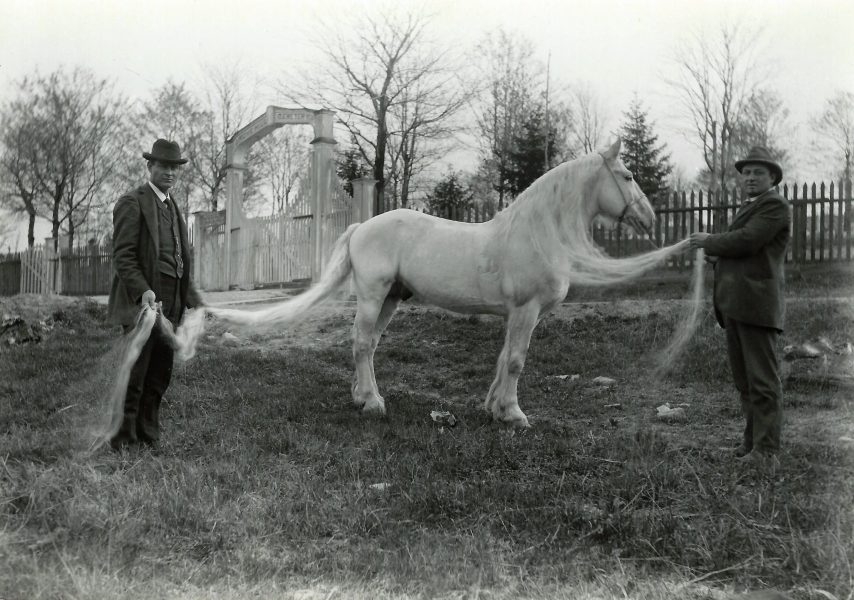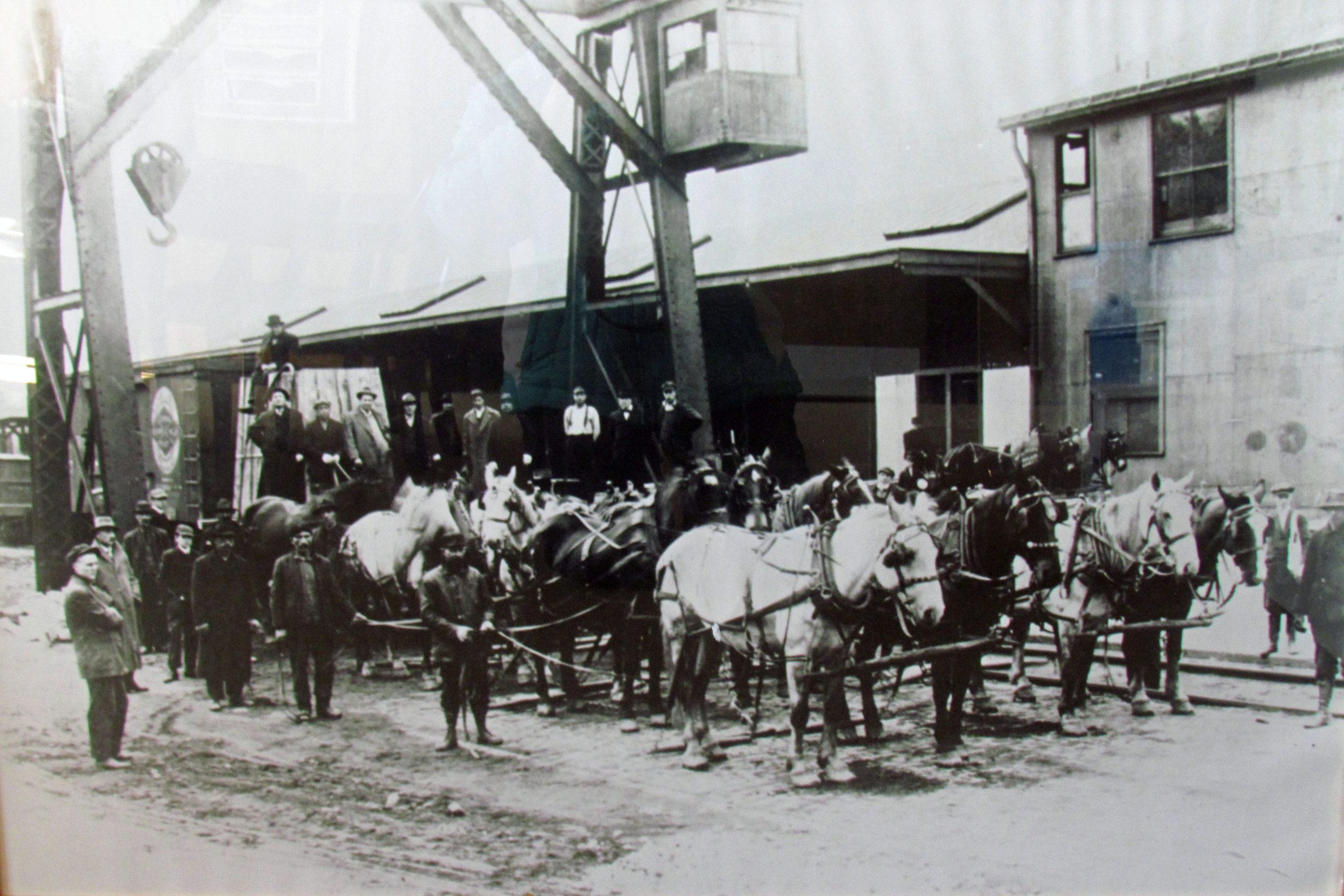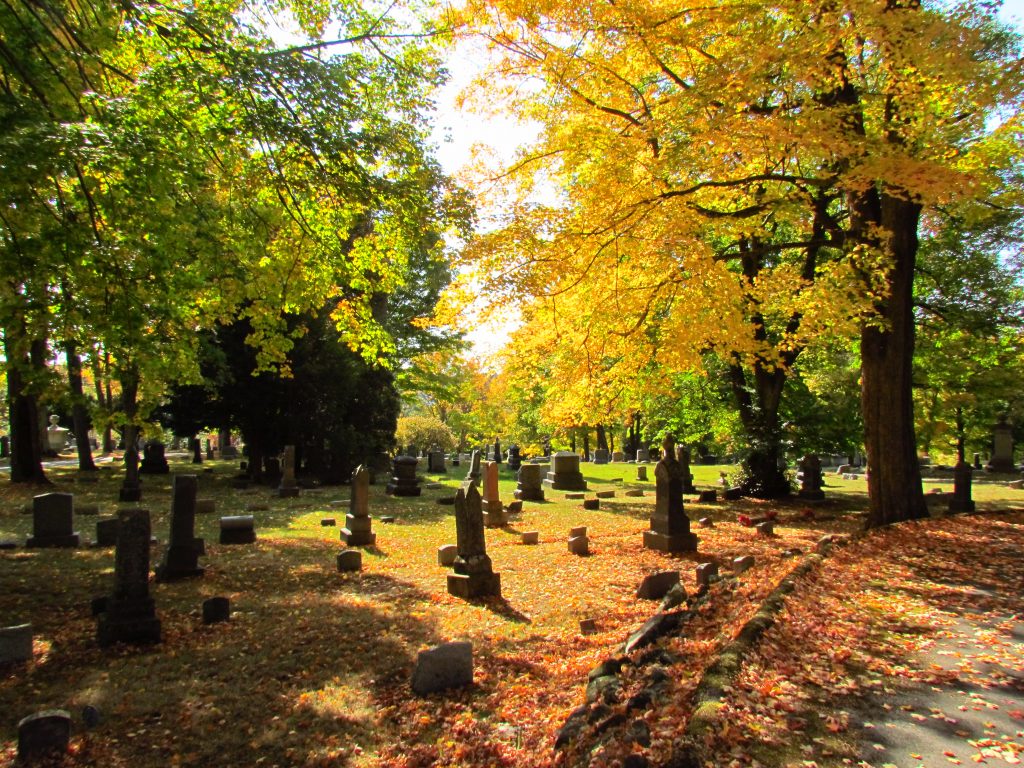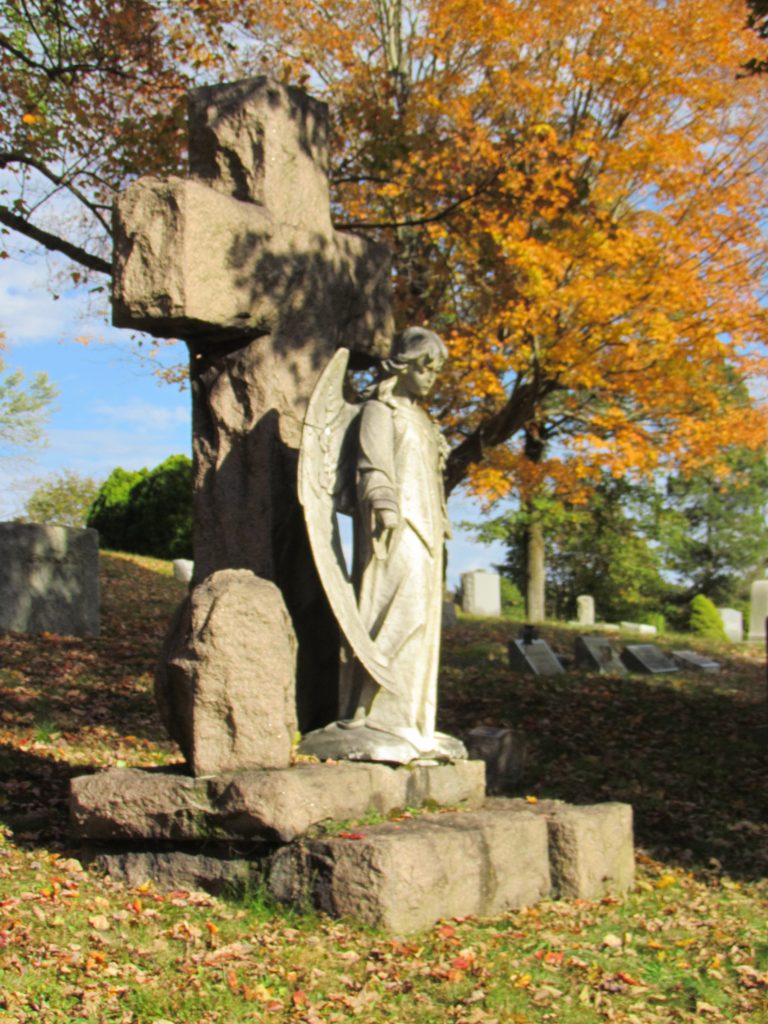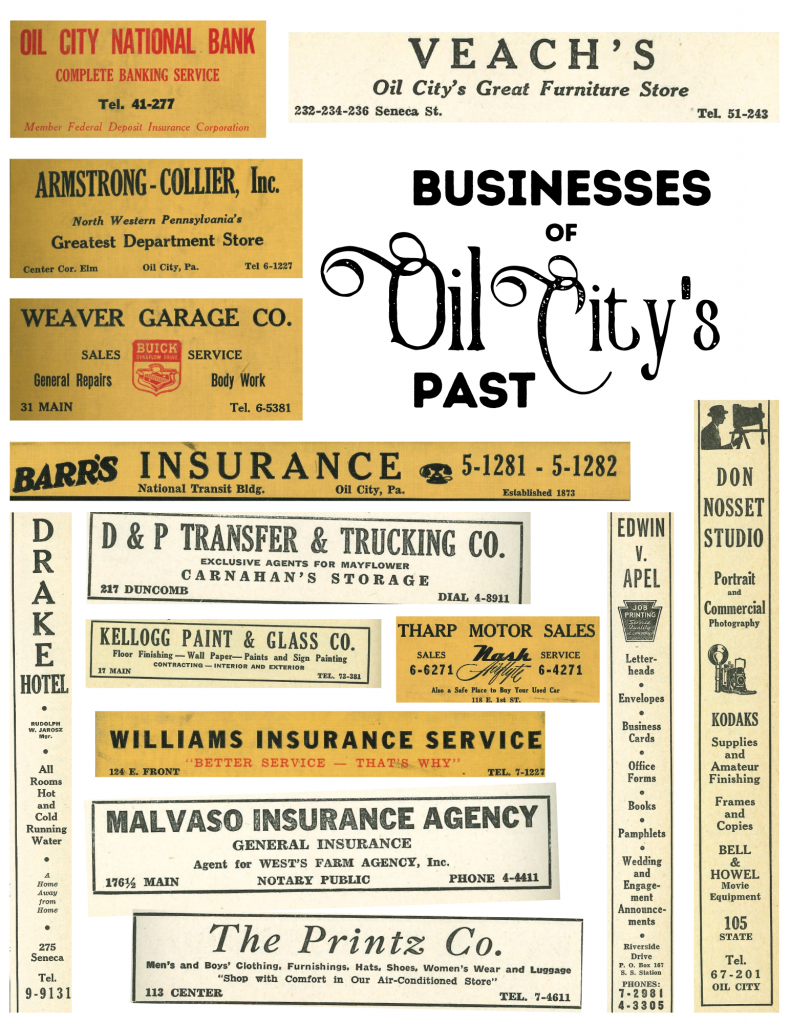Grove Hill Cemetery
- Judy Etzel
- October 22, 2021
- Hidden Heritage
- 4651
Grove Hill Cemetery, Oil City’s central city graveyard, was formally dedicated on June 22, 1871.
It took only a matter of days until many grave plots were filled.
Even as it opened, it immediately became the burial grounds for numerous city residents whose remains were exhumed from several small cemeteries located elsewhere in the city. Joining that first group of interred city residents were others whose graves had been found as streets and buildings were being constructed in the newly incorporated City of Oil City.
The Grove Hill Cemetery project began when a group of Oil City women publicly lobbied to establish a large and public cemetery in the fall of 1870. Money was raised to buy a 9.5 acre lot, at a cost of $150 an acre, from the Hasson and Graff Co. The company, owned by oil barons, owned considerable land within the city. The Grove Hill Cemetery site had been long referred to as “one of the largest wild turkey roosts in the county.”
At the 1871 dedication, downtown Oil City businesses were closed in order to allow residents to join in a large parade from Center Street up the hill to the new cemetery at the head of Bishop Avenue. Marchers included the Columbia Band, clergy members, a choir, city officials, members of lodges and social clubs, musicians and everyday citizens.
The cemetery includes an indigents’ burial lot known as Potter’s Field as well as an area where victims of the city’s devastating fire and flood on June 5, 1892, are buried. Most of the victims’ plots do not have tombstones.
The largest monument in the cemetery is for the Smithman family, founders of Monarch Park and owners of the local trolley system.
The Smithman Family
John Bernard Smithman came to Oil City in 1863-64 and taught German and English in the Red School House in what is now part of Oil City’s South Side.
Becoming interested in the oil business, first as a dealer and then as a producer, he made a fortune for himself before the age of 30 and gave generously, both of his time and means, to civic and community undertakings.
He drilled his first oil well in 1866 on the bank of Oil Creek. The venture was successful and he rapidly expanded into other counties.
In 1877, he was chairman of a committee that secured a charter for the Oil Exchange and selected the site for the building. Taking an active part in the regulation of the speculative oil trade, he was chairman of the committee that formulated the rules governing the various oil exchanges.
He also developed a plan for the exchanges in the recording of the daily receipts and deliveries of millions of barrels of oil changing hands every 24 hours. During 1884 he pioneered in the Speechley gas field in Venango County, helping to organize the Columbia Gas Company which later became part of what became the United Gas Co. He also invented the flexible coupling for connecting gas pipe joints.
In 1890 he incorporated the Oil City Street Railway Co., built the Relief Street Bridge for the line and the first car was “shot hot” and operated on Thanksgiving Day, 1893. He then created Smithman Park along Deep Hollow Road where he had oil wells and the streetcar line was extended to that point. With the sale of the line and park in 1901, the new owner changed the name to Monarch Park.
Though Smithman owned a car, a large Winton, he always rode the streetcar that stopped for him in front of his home on West First Street.
The 45-ton pink granite column that marks his burial plot was erected in 1928. The column and headstones were delivered to Oil City by railroad and it took the power of eight teams of horses to move the massive stones up the steep grades from downtown to the cemetery.
When a friend asked why he had erected the largest gravestone in the cemetery, he replied, “I want future generations to ask the same question. I would like them to inquire who I was.” (Written by Margo Mong for the 2018 Grove Hill Cemetery tour booklet.)
Within a few years, the cemetery association members decided to build a small mausoleum in the center of Grove Hill. The project was prompted by the need to hold bodies during the winter months when it was difficult to dig the graves by hand. In 1915, a larger mausoleum known as the Keystone was built at the request of several lot owners who insisted on being buried above ground. It soon followed that other local families, including Chambers, McCracken, Justus, Kramer and Ramage, built their own mausoleums.
St. Joseph Cemetery is adjacent to Grove Hill Cemetery. As the St. Joseph Church congregation grew, lots in the small cemetery were soon sold out. In 1908, the city’s Catholic parishes jointly bought a 30-acre tract in the vicinity of Oak Grove Street and Lynch Boulevard and established Calvary Cemetery.
The Grove Hill Cemetery is the final resting place for hundreds of Oil City citizens. While the roster includes the prominent as well as the ne’er-do-wells, the listing also features a number of unusual souls who either personally or by way of family connections made their marks in different ways.
For example:
- Sarah Halyday, a personal friend of Chief Cornplanter and his tribe.
- John Street Rich, an oil producer whose body is enclosed in a glass casket.
- Dr. Ada McKee, who delivered more than 4,000 babies and in the early days of her career made house calls by horse and buggy and later by bicycle.
- Frederick Becker, a German immigrant who saw Gen. Robert E. Lee surrender to Gen. Ulysses Grant at Appomattox.
- Andrew Shaffer, who started the first cigar factory in Oil City and shook hands with President Lincoln during the Civil War.
- Wealtha Van Ausdall, an artist who is reputed to be the first woman lithographer in the U.S.
- Fred Chambers built a hardware store in Oil City in 1906 and the building had its own electric plant in the basement.
- Samuel Justus, a philanthropist who was sued for breach of engagement (reneged on an engagement with a local woman) and had considered booking rooms on the Titanic to sail back from Europe.
- William Kramer, the owner of a factory that made wagons, one of which is in the Smithsonian in Washington, D.C.
- H. Douglas Brown, who flew the first airmail between Oil City and Pittsburgh in 1935.
- Clifford Fisher, employed in the concrete business, is buried in 7.5 yards of concrete.
- Charles Swaney served as a private in the U.S. Colored Infantry during Civil War and is honored as part of the African-American Civil War Memorial in Washington D.C. (plaque #B-42). He later served on the Oil City police force and worked at Oakwood Rose Garden.
- Marian Akins Dolby was awarded the Carnegie Hero Medal for saving a three-year-old in a house fire in 1930.
Support This Project
Donations to the library are appreciated to help offset printing costs & make this project possible!
Make a DonationWritten by Judy Etzel with research by Kay Dawson and design by Natalie Cubbon.

